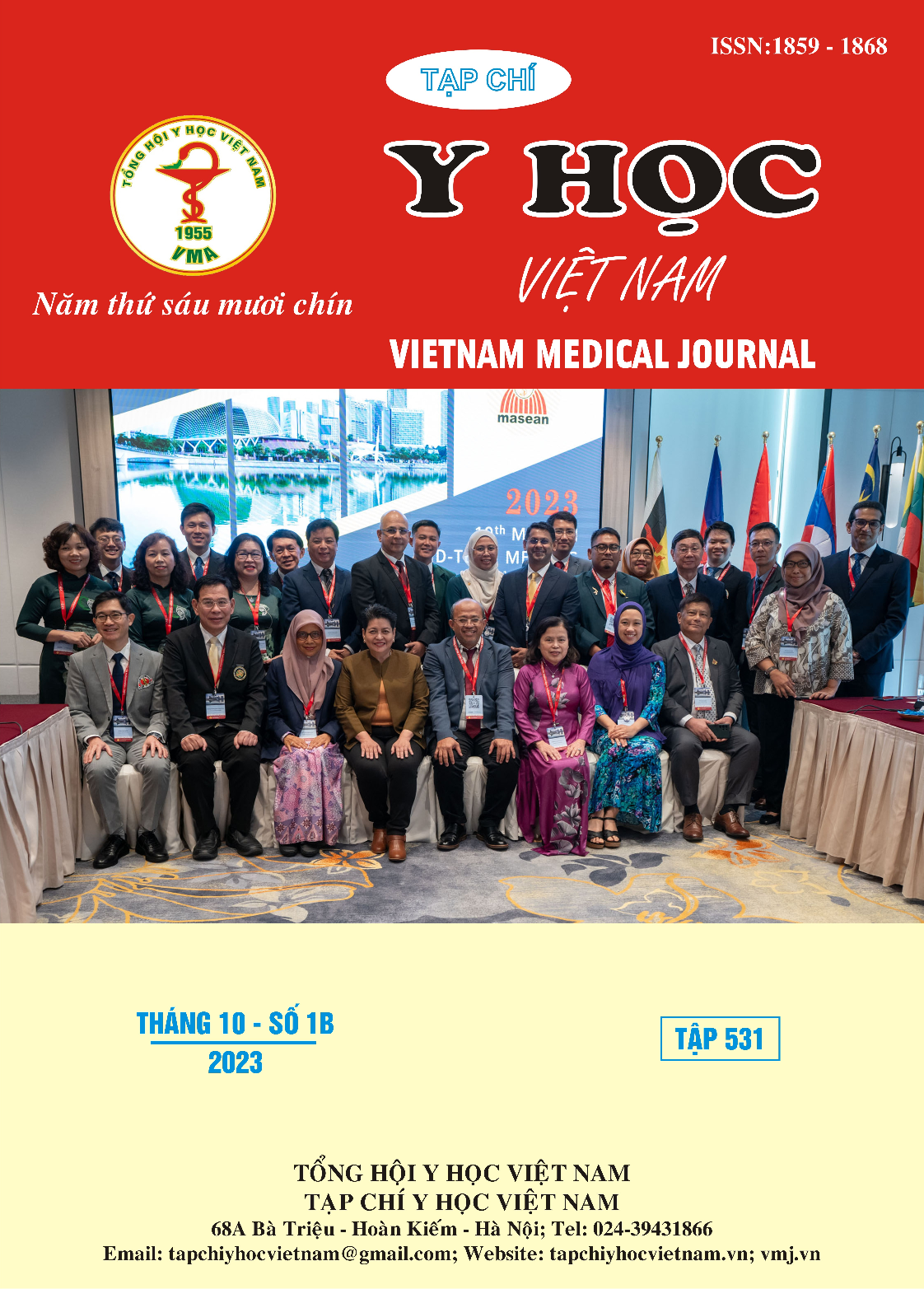EVALUATION OF TREATMENT ADHERENCE, RELATED FACTORS, AND COMMUNICATION INTERVENTION OUTCOMES IN COPD PATIENTS AT CA MAU GENERAL HOSPITAL IN 2022-2023
Main Article Content
Abstract
Introduction: Chronic Obstructive Pulmonary Disease (COPD) is a highly prevalent condition; however, the treatment adherence among patients is not yet optimal, leading to prolonged treatment duration that significantly impacts health and may result in severe complications. Objectives: The study aims to achieve two objectives: 1) to determine the rate, level of adherence, and factors associated with non-adherence to treatment; and 2) to evaluate the outcomes of communication interventions to enhance treatment adherence in COPD patients at Ca Mau General Hospital from 2022 to 2023. Materials and methods: A descriptive cross-sectional study with combined analysis and non-concurrent intervention was conducted on 332 COPD patients. Results: Among the 332 study subjects, good adherence accounted for 6.9%, moderate adherence accounted for 12.7%, and poor adherence was the highest at 80.4%. Treatment adherence varied significantly based on education level, occupation, number of medications used, and knowledge of complications. Before the intervention, treatment adherence was observed in 65 cases (19.6%), while after the intervention, it increased to 260 cases (78.3%). The difference before and after the intervention was statistically significant with a p-value of <0.001. Conclusion: Treatment adherence depends on multiple factors; however, timely interventions using appropriate measures can significantly improve treatment adherence in COPD patients.
Article Details
Keywords
Chronic Obstructive Pulmonary Disease, COPD, treatment adherence.
References
2. Nguyễn Văn Thành (2017). COPD nhìn từ bản chất viêm và tiếp cận điều trị. Vietnam Consensus of Respiratory Expert Panel, No 3.
3. Alvar Agustí (2020), COPD 2020: changes and challenges, The American Physiological Society, https://doi.org/10.1152/ajplung.00429.2020.
4. Hội Lao và Bệnh phổi Việt Nam 2016, "Tăng cường tuân thủ quản lý và điều trị Hen, COPD tại cộng đồng", Biên bản đồng thuận chuyên gia 2016.
5. Adeloye, Davies et al. (2019), Global, regional, and national prevalence of, and risk factors for, chronic obstructive pulmonary disease (COPD) in 2019: a systematic review and modelling analysis. The Lancet Respiratory Medicine, Volume 10, Issue 5, 447 – 458.
6. Tạ Hữu Ánh (2021), Đánh giá thực trạng tuân thủ điều trị ở bệnh nhân bệnh phổi tắc nghẽn mạn tính điều trị ngoại trú. Tạp chí y học Việt Nam, tháng 11, số 2, trang 213-217.
7. Vương Văn Thắng (2021), Kiến thức và thái độ tuân thủ điều trị của người bệnh phổi tắc nghẽn mạn tính điều trị ngoại trú tại Bệnh viện đa khoa tỉnh Lạng Sơn, Tạp chí Khoa học điều dưỡng, tập 4, số 4, trang 99-109.
8. Maureen George & Bruce Bender (2019). New insights to improve treatment adherence in asthma and COPD, Patient Preference and Adherence, 13:, 1325-1334, DOI: 10.2147/PPA.S209532.
9. Stanca-Patricia Hogea (2021). Risk factors of chronic obstructive pulmonary disease exacerbations. The Clinical Respiratory Journal. Volume14, Issue3. Pages 183-197.
10. Tzanakis, N., Koulouris, N., Dimakou, K. et al. (2021). Classification of COPD patients and compliance to recommended treatment in Greece according to GOLD 2017 report: the RELICO study. BMC Pulm Med 21, 216 (2021). https://doi.org/10.1186/s12890-021-01576-6.


